Contents
Parsnip is a vegetable of the Umbrella family, which has a number of beneficial properties for humans. It is widely used not only in cooking, but also in folk medicine. The root crop is actively used in their work by cosmetologists and nutritionists. Other names for parsnips: white root, white carrot or field borscht allow you to imagine how it looks like, what taste it has.
Brief description of the vegetable
Externally, the parsnip looks like a tall grass with a straight, branched stem on top. It can reach a height of 120 cm. Large, long parsnip leaves are located on thin twigs. The vegetable blooms in July-August with yellow flowers, collected in bunches-umbrellas, like dill. Ripens in September and forms fruits in the form of yellow-green achenes.
Under the ground, a round or conical root crop is formed, somewhat similar to carrots, but creamy in color. The size of a vegetable can reach 25 cm. The taste is sweet with a nutty flavor.
Parsnip is native to the Caucasus, but it can be found everywhere – in America, Asia and Europe. The vegetable is very unpretentious to the soil and growing conditions. All parsnips need is loose and moist soil.
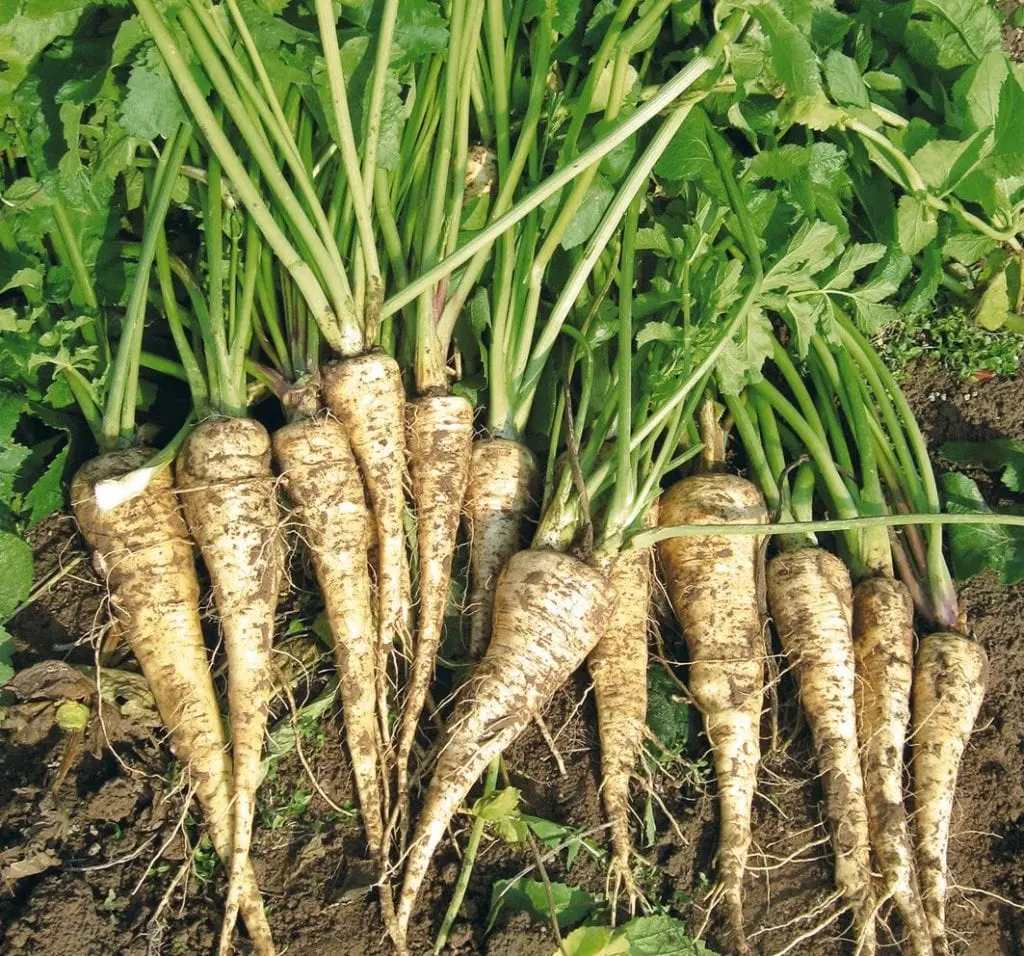
Composition, nutritional value and calorie content of parsnips
The benefits and harms of parsnips are due to its chemical composition. Vegetables contain large quantities of such valuable substances as:
- potassium;
- calcium;
- sodium;
- magnesium;
- zinc;
- sulfur;
- silicon;
- chlorine;
- manganese;
- selenium;
- phosphorus;
- copper;
- iron;
- vitamins of group B, K and C;
- folates;
- cellulose;
- antioxidants;
- essential oils;
- pantothenic acid.
100 g of fresh vegetables contain the most carbohydrates – 17.9 g, few proteins – 1.2 g and even less fat – 0.3 g. The calorie content of parsnips is also low – only 75 kcal per 100 g.
Useful properties of parsnips
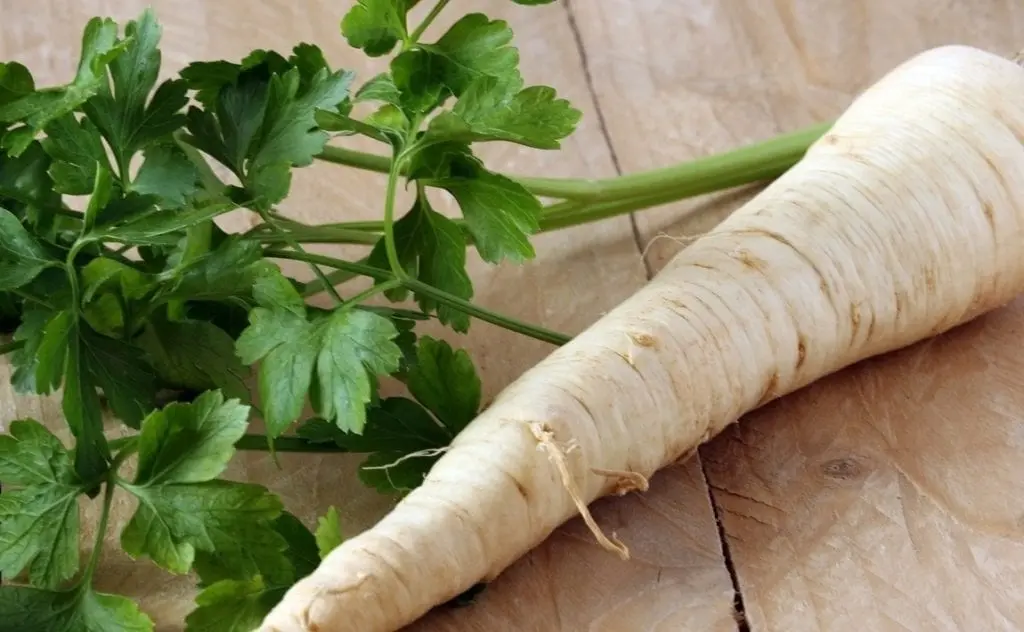
The beneficial properties of parsnips made it possible to use the vegetable for the treatment and prevention of various disorders in the body. Fresh parsnips are useful for eating:
- to increase brain activity;
- strengthening bones, nails;
- increasing appetite, stimulating the production of gastric juice;
- treatment of diseases of the upper respiratory tract, lungs, in particular, bronchial asthma, tuberculosis and emphysema;
- improving the absorption of nutrients, vitamins from food;
- elimination of intestinal distention, constipation;
- raising the general tone of the body;
- normalization of hormonal levels;
- increasing efficiency:
- fight against dermatitis, acne;
- elimination of fine wrinkles;
- strengthening, hair growth.
For men
The healing effects of parsnips are manifested in kidney problems, since the vegetable has a diuretic effect. Traditional healers use parsnips to dissolve kidney stones, in the complex treatment of cystitis, urinary and gall bladder. A positive effect is noted in prostatitis in men.
For women
Women who want to find a slim figure can safely consume this vegetable in any quantity. Parsnip accelerates metabolism well and promotes the breakdown of fats, while removing excess fluid from the body.
A number of medicines are produced on the basis of this vegetable, and traditional medicine uses fresh root juice, as well as parsnip leaves in the form of decoctions and teas.
It is important to know that only parsnip is useful. But wild parsnip, which is also called forest or meadow, can be confused with wild dill due to inexperience.
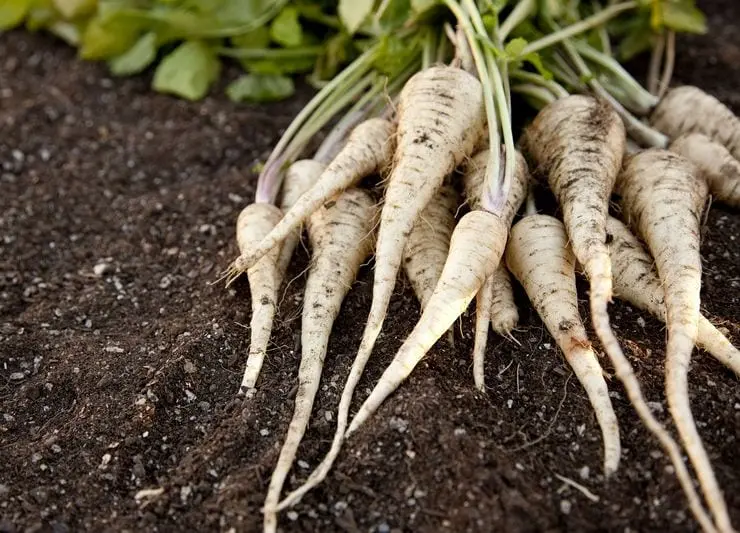
Its leaves in sunny weather cause skin burns, as well as the well-known field hogweed. It is enough only for a small amount of the juice of this vegetable to fall on the open areas of the body.
Therefore, in nature or in the forest, you need to be careful not to touch wild parsnips.
But garden parsnips are not so harmless either. This is a very useful vegetable that, in certain diseases, can harm human health if there is an individual intolerance to its components. Parsnips should not be consumed:
- with serious violations of the kidneys;
- severe urolithiasis;
- acute pancreatitis;
- pathological disorders of the nervous system;
- high sensitivity of the skin to ultraviolet rays, due to the risk of sunburn.
Parsnip-based products can also harm children and older people if their bodies are weakened by disease. In these cases, you need to consult a doctor before proceeding with vegetable treatment.
The use of parsnips in cooking
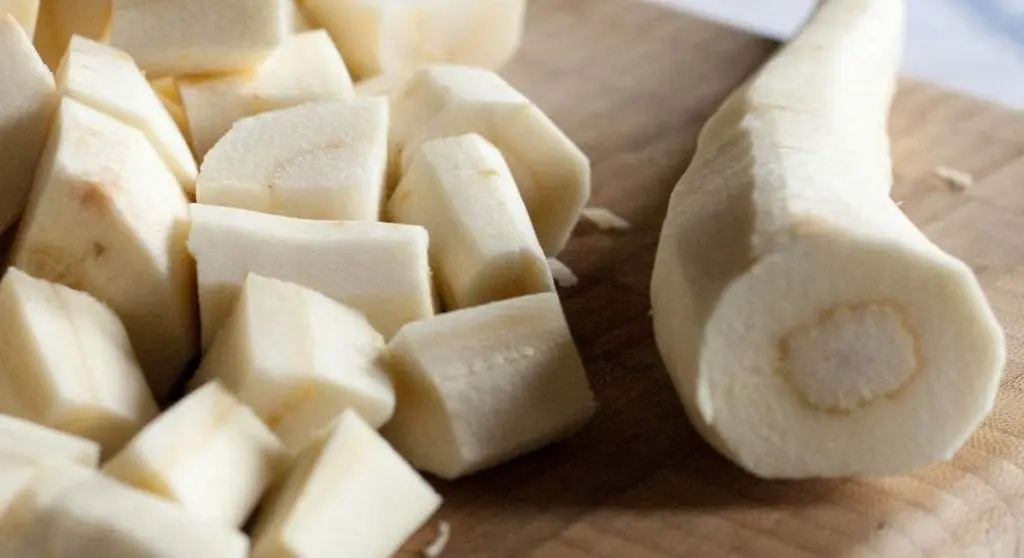
In the culinary traditions of various peoples, parsnip is used in the preparation of sauces, meat dishes, first and second courses, side dishes, salads, soups, roast pork, beef. In this case, the root and leaves of the vegetable are used in fresh or dried form.
The benefits of this vegetable will be greater if you know how to properly consume parsnips. Young root can be boiled, baked, stewed or canned, mashed or sauce. Leaves can only be used when young. They serve as an excellent seasoning for fish, meat, vegetable salads.
In a salad, fresh parsnip root is grated along with other vegetables, such as carrots. Boiled root is suitable for fish and meat garnishes. You can eat it raw, but it will taste a little bitter.
It is also fried in a pan or grilled, stewed with olive oil, and to obtain an unusual aroma of the soup, it is dipped whole and boiled until the dish is cooked, and then removed.
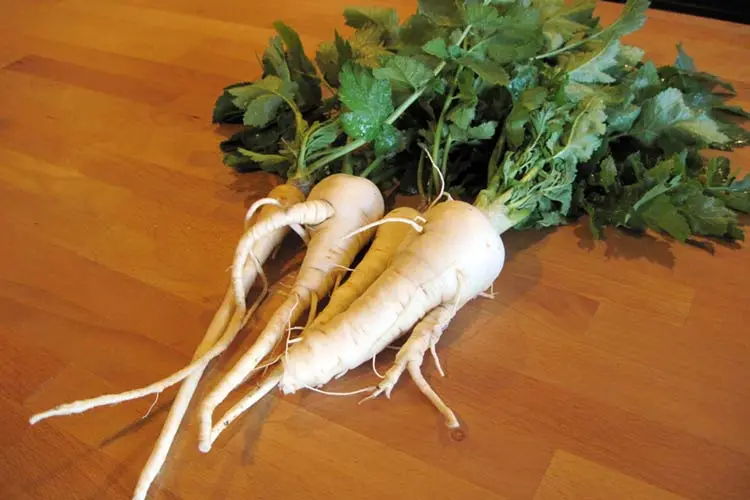
In some countries, crushed paternak powder is added to coffee to add a special flavor to the drink.
In some recipes, parsnips can be substituted for celery. Although they are not the same, these plants are related and belong to the same family. They are somewhat similar in taste and aroma. The difference lies in the shape of the leaves and fruits.
Growing and storing vegetables
Growing parsnips in your garden or country house is a snap if you have parsnip seeds.

The best parsnip varieties for all climatic zones of Russia are:
- “White stork”. The variety is mid-season, gives a good harvest. The growth period is 120 days. The root is white, conical, completely submerged in the soil. Weight up to 100 g, yield from 2.7 to 3.5 kg / m2.
- “Round”. Early variety – ripens in 80-85 days. The shape is conical-round, white in color, weighing about 140 g. The yield reaches up to 3 kg / m2. Suitable for growing in heavy soils.
- “Heart”. Medium in terms of ripening. Has a heart-shaped shape. Smooth, flat-headed and white flesh. The mass is small – up to 100 g. Yields a yield of 1.8 to 3.9 kg / m2.
- “White Fang”. Medium early variety with white, juicy pulp. From the first shoots to harvest, 110-120 days pass. Yields from 2.5 to 3.5 kg / m2.
- “The best of all.” The growing season is from 100 to 130 days. Root crops are conical in shape, with a pointed end. The mass depends on the growing conditions and ranges from 100 to 200 g. The yield is the same as that of the “White Fang”.
- There are also lesser-known varieties: Boris, Gladiator, Guernsey, Hormone, Culinary, Petrik, Student, Long, Russian Size, Delicatessen.
When growing parsnips, it is important to choose the right place and prepare the garden. This vegetable loves slightly acidified soil, with loose and moist soil. The place should be well lit by the sun; in the shade, the vegetable grows poorly. It also does not tolerate too much moisture. Watering should be done sparingly and taking care of good drainage, otherwise the parsnip roots may rot.
Parsnips grow best after potatoes, onions, cucumbers and cabbage. The land is prepared in the fall, applying top dressing in the form of organic or mineral fertilizers. Manure is not suitable for a vegetable, since it causes deformation and branching of the root crop.
Many are interested in the question of whether and how to plant parsnips with seedlings. This is not worth doing, since this method is not suitable for this vegetable. Its root is disfigured and deformed, just like carrots.
Care consists in regular watering and loosening of the soil. The soil around the vegetable needs to be poured so that it does not turn green in the sun. Top dressing with nitrogen fertilizer is carried out 1.5 months after germination, then another month later.

Parsnips are usually harvested from the garden in late autumn. During this period, the maximum amount of nutrients accumulates in the vegetable. The root is carefully dug out, pulling the tops, and cleaned of leaves. For winter storage, root crops are chosen without traces of damage and rot.
It is convenient to store fresh vegetables in a cellar or basement in boxes with wet sand at temperatures from 0 to 2 ° C and relative humidity of 90-95%. You can store it in polyethylene bags too.
The roots of the plant are also oven dried. To do this, they are cut into strips and placed on a baking sheet at a temperature not exceeding 50 ° C. Drying time is from 10 to 20 minutes. The dried roots are stored in an airtight glass container. So they will not lose their beneficial properties.
Parsnips are frost-resistant, so the roots can be left under the snow instead of digging up in the fall. Cold will only improve their nutritional properties and taste.
Under the influence of cold, the starch contained in the plant is converted into sugar. Therefore, the vegetable will become sweeter. You need to dig up such a fruit in the spring, when the snow melts and the soil thaws.
But it is important not to allow the beginning of the growing season, otherwise the taste will deteriorate much.










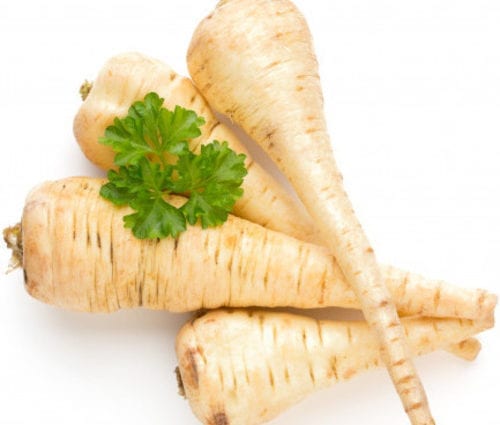
N/A